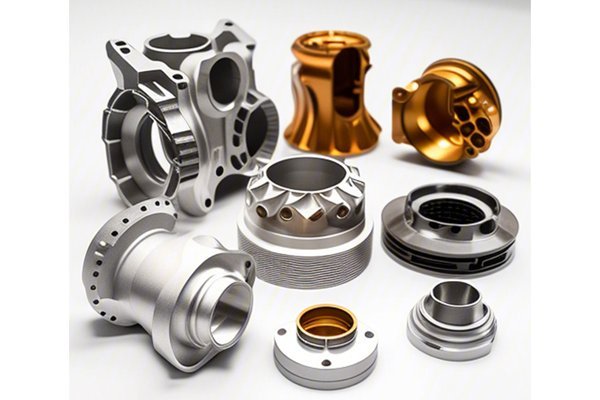Did you know that approximately 50% of manufacturing companies consider high-tolerance components critical for their operations? As industries continue to evolve amidst technological advancements, the demand for precision engineering has remained paramount. High-tolerance components are essential in fields such as aerospace, automotive, medical devices, and electronics, where even the smallest deviation in measurements can lead to significant failures, safety concerns, or competitive disadvantages.
In this comprehensive guide, we’ll explore the world of custom CNC machining, particularly focusing on its advantages for producing high-tolerance components. We’ll delve into what CNC (Computer Numerical Control) machining is, why high tolerances are crucial, and the multifaceted benefits of utilizing custom CNC machining services. By the end of this article, you’ll gain a deeper understanding of CNC machining’s role in producing high-precision components and how it can be a game changer in your manufacturing processes.
Understanding CNC Machining
What is CNC Machining?
CNC machining refers to a subtractive manufacturing process that utilizes computer-controlled machines to remove material from a workpiece. The term “CNC” denotes the use of computerized controls that execute predefined patterns and instructions, optimizing both precision and efficiency in the manufacturing process. CNC machining encompasses various processes, including milling, turning, drilling, and grinding, each tailored to produce specific geometries and tolerances.
The Growth of CNC Machining
The CNC machining landscape has transformed significantly, especially with technological advancements in software and machinery. According to a report from Technavio, the CNC machining market is projected to grow by over 8% from 2021 to 2025, driven by the increasing need for automation and precision across different sectors.
Why High-Tolerance Components Matter
Definition of High-Tolerance Components
High-tolerance components are parts or products manufactured with extremely precise specifications, often falling within a tolerance range of ±0.001 inches or even tighter. These components demand rigorous adherence to exact dimensions and surface finishes, ensuring that they function as intended in their respective applications.
Importance Across Industries
Risks of Poor Tolerance
Producing components that do not meet high-tolerance standards can lead to:
The Advantages of Custom CNC Machining for High-Tolerance Components
One of the primary benefits of custom CNC machining is its inherent precision. CNC machines are capable of executing complex designs with remarkable accuracy, as they follow computerized instructions that eliminate human error. This is particularly crucial when manufacturing high-tolerance components where even minuscule deviations can be catastrophic.
CNC machining allows for immense flexibility in design and production. Manufacturers can create custom components tailored to specific applications, accommodating various geometries and sizes. Whether it’s a one-off prototype or a large batch production run, CNC machining provides solutions that can adapt to your needs.
Although the initial setup costs for CNC machining can be high, the efficiency and speed of the process often result in lower long-term costs. The ability to produce complex parts in one setup minimizes labor time and material waste. Additionally, the consistent quality of CNC machined parts reduces the costs associated with rework or inspection.
Custom CNC machining is known for its rapid production capabilities. Once the program is written and tested, parts can be produced quickly and consistently. This is particularly beneficial in industries where turnaround times are critical, such as automotive or aerospace.
Most CNC machining processes produce incredibly smooth surface finishes, which can reduce or eliminate the need for extensive secondary operations like sanding or polishing. This advantage is essential in applications where aesthetics and functionality go hand in hand, such as in medical devices or consumer electronics.
CNC machining accommodates a wide range of materials, including metals, plastics, ceramics, and composites. This versatility allows manufacturers to select optimal materials based on the specific requirements and tolerances of the project. By utilizing high-quality materials and processes, manufacturers can produce robust components that meet or exceed industry standards.
Unlike traditional manufacturing processes, CNC machining guarantees a high degree of consistency across all products. Once a program is established, every produced part will adhere to the same strict specifications, ensuring that every component is identical and meets the required tolerances.
Incorporating advanced technologies—such as 5-axis machining—enhances the capabilities of CNC machining. 5-axis machines can move a workpiece along five different axes, allowing for the creation of highly complex parts with intricate designs. This technology reduces the need for multiple setups, thereby improving efficiency and accuracy.
The Process of Custom CNC Machining for High-Tolerance Components
Step 1: Design and Prototyping

The first step in custom CNC machining involves creating detailed CAD (Computer-Aided Design) models of the components. This stage is crucial, as it sets the foundation for the entire manufacturing process. Designers must consider the functional requirements, stress points, and tolerances during this phase.
Step 2: Material Selection
Choosing the right material is paramount for the component’s performance and durability. Factors such as strength, weight, corrosion resistance, and machining characteristics must be evaluated. After selecting the material, suppliers must ensure that it meets the necessary standards.
Step 3: Tool Path Programming
Once the design and material are finalized, CNC programmers develop the tool path that the machine will follow. This stage involves inputting the specifications and tolerances into the machine’s software to ensure precise operation.
Step 4: Machining
With the programming complete, the CNC machine begins the machining process. The machine will follow the programmed instructions, utilizing various cutting tools to remove material until the desired shape and tolerances are achieved.
Step 5: Quality Assurance
Throughout the machining process, quality assurance is vital. Engineers and machinists utilize various measuring tools—such as calipers and CMM (Coordinate Measuring Machines)—to ensure that the components meet the specified tolerances. Any discrepancies or deviations must be addressed immediately to prevent the production of faulty parts.
Step 6: Finishing Touches
After machining, components may require additional finishing processes to achieve the desired surface finish or functional properties. This can include treatments such as anodizing, coating, or polishing.
Step 7: Testing and Inspection
After undergoing finishing processes, the final components are subjected to rigorous testing and inspection. This is necessary to confirm that they meet the required safety, performance, and durability standards before being delivered to clients.
Real-World Applications of Custom CNC Machining
Aerospace Components
In the aerospace field, custom CNC machining is utilized to produce critical parts, such as turbine blades, structural components, and fasteners. Using CNC technology ensures these parts are produced within the exact tolerances needed for flight safety and efficiency.
Medical Devices
Medical devices require extreme precision. CNC machining is used for producing surgical instruments, implantable devices, and diagnostic equipment, ensuring they comply with regulatory standards while maintaining functionality.
Automotive Parts
The automotive industry relies on high-quality CNC machining to create components such as engine blocks, transmission housings, and brake systems. These components must meet strict tolerances to ensure safety and performance during vehicle operation.
Electronics
CNC machining produces precision housings and connectors in the electronics sector. High-tolerance components help ensure the durability of devices and systems, preventing failures that could lead to user dissatisfaction.
Defense and Military
For defense applications, custom CNC machining is crucial for producing weapon systems and specialized equipment. Components made using CNC processes must adhere to stringent specifications to ensure reliability in the field.
Challenges in Custom CNC Machining
While CNC machining offers numerous benefits, manufacturers may encounter challenges, including:
High Initial Setup Costs
The need for specialized training, advanced machinery, and software can make initial setup costs prohibitive, particularly for smaller businesses.
Complexity of High-Tolerance Specifications
Meeting tight tolerances requires comprehensive planning, programming, and inspection processes. Any miscalculations or oversight can incur significant costs and delays.
Material Limitations
Certain materials may pose machining difficulties, such as being too hard (leading to rapid tool wear) or too soft (resulting in deformation during processing).
Dependence on Skilled Operators
Operating CNC machines requires skilled personnel capable of programming and troubleshooting complex systems. The shortage of qualified technicians in the workforce can impede operations.
In summary, custom CNC machining is indispensable for producing high-tolerance components across various industries. Its advantages, including precision, customization, rapid production, and material versatility, make it an optimal choice for manufacturers demanding quality and efficiency.
Engaging in CNC machining for high-tolerance components not only ensures adherence to strict specifications but also drives innovation and improvement within organizations. As technology in manufacturing continues to advance, embracing CNC machining can be the deciding factor for companies striving to maintain a competitive edge in today’s market.
Remember, investing in custom CNC machining services is not merely about obtaining high-quality components; it’s about ensuring safety, reliability, and performance across the products that impact lives daily. As you consider your manufacturing needs, think of how CNC technology can optimize processes, reduce costs, and ultimately enhance the quality of your offerings.






